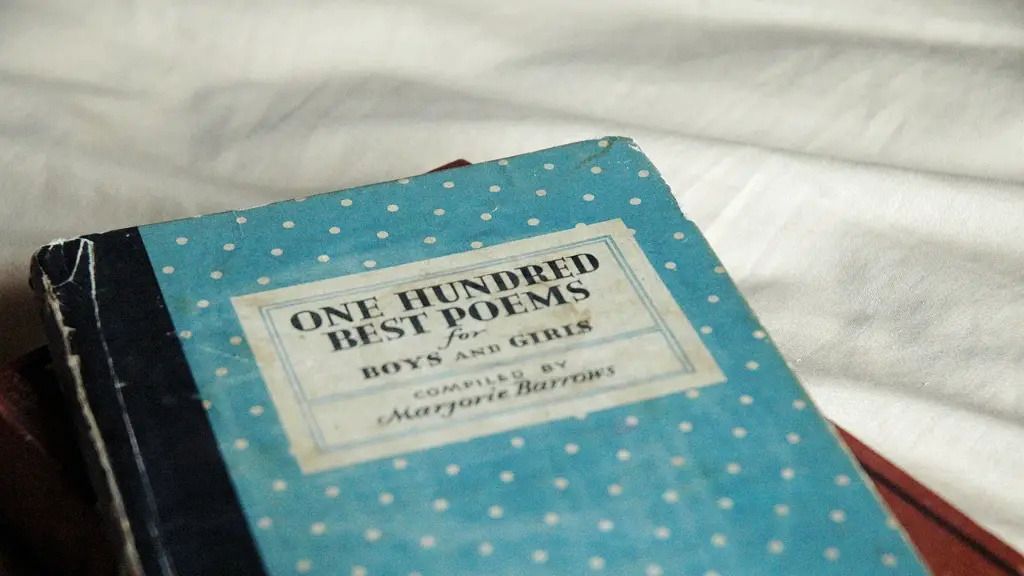Emily Dickinson was one of the most prolific and influential American poets of the 19th century. She is best known for her unconventional and often ambiguously cryptic poetic style. Though Emily Dickinson was not widely published during her lifetime, her posthumous popularity has been immense, and her poetry is now considered some of the finest in the English language. Dickinson’s work was largely inspired by her deep personal introspection and abiding interest in the mysteries of death and immortality. Her poems often deal with themes of nature, love, and loss, and their unique form and language has had a lasting impact on American poetry.
Emily Dickinson is considered one of America’s greatest poets. She was a prolific writer, and her work was largely unpublished during her lifetime. After her death, her sister discovered nearly 1,800 poems, which were then published and have since been translated into many languages. Dickinson’s work is known for its innovative style and use of unusual imagery. Her poems often deal with themes of death and immortality, and her work helped to shape the literary landscape of the United States.
Why is Emily Dickinson so important?
Emily Dickinson is an important figure in American poetry for her innovative style and her ability to capture the experience of inner life. Her poems are marked by their use of unexpected images and turns of phrase, which create a sense of freshness and vitality. Additionally, Dickinson’s poems often deal with themes of death and mortality, which give them a deep and resonant emotional power.
Emily Dickinson is one of America’s most renowned poets, and her style was truly groundbreaking. She eschewed traditional meter and rhyme schemes in favor of a more fluid, conversational style that was adapted from English hymns. This gave her poems a unique and distinctive voice that has resonated with readers for generations.
Who did Emily Dickinson inspire
Emily Dickinson is one of the most widely read poets of all time and has inspired writers like Anne Sexton, Sylvia Plath, and Colleen Hoover. She’s known for her unique style of writing and her ability to capture the human experience in a way that is both relatable and timeless.
Emily Dickinson was an independent thinker who was never afraid to challenge the status quo. She encouraged people to be open-minded and embrace their individuality. Her poems challenged conventional ideas about marriage, family, and religion. Many people have used her lessons as a source of inspiration over the years.
How is Emily Dickinson inspirational?
Emily Dickinson was an amazing person who always stood up for what she believed in. She was an inspiration to many people and did what she thought was right, even though it wasn’t always easy. She learned to read and write when females weren’t supposed to, and she introduced the world to a new kind of writing and poetry. Emily Dickinson was a truly remarkable woman, and we are all better for having known her.
Emily Dickinson was a prolific and enigmatic poet who wrote during the mid-19th century. Though only a handful of her poems were published during her lifetime, Dickinson is now considered one of the most important American poets. Born in Amherst, Massachusetts, to a prominent family, Dickinson was educated at a local academy and briefly attended Mount Holyoke Female Seminary. She returned home after a few months, and spent the rest of her life living in reclusion. Dickinson’s poetry is known for its unconventional style and form, as well as its focus on death, love, and nature. In the years since her death, much has been speculated about Dickinson’s personal life, including her possible love affairs and religious beliefs.
What is Emily Dickinson’s legacy?
Dickinson’s poetic legacy consists of almost 1800 poems, and no instructions about what to do with them. What was done with them, how Dickinson went from unknown to internationally-famous poet, is a story fraught with emotional intensity, differing loyalties, and personal sacrifice.
Dickinson is now known as one of the most important American poets, and her poetry is widely read among people of all ages and interests. Emily Elizabeth Dickinson was born in Amherst, Massachusetts, on December 10, 1830 to Edward and Emily (Norcross) Dickinson. She attended the Amherst Academy from 1847-1848 and Mount Holyoke Female Seminary from 1847-1848. After Dickinson’s father’s death in 1874, she became increasingly reclusive and spent a great deal of her time in her bedroom, where she wrote the majority of her poetry. Dickinson’s poems were mostly unpublished during her lifetime, but she did send them to friends and family members. It was not until after her death on May 15, 1886, that her sister Lavinia discovered the cache of nearly 1800 poems, and oversaw the publication of Dickinson’s first volume of poetry in 1890.
What are two important works by Emily Dickinson
One of the most prolific and renowned poets of the 19th century, Emily Dickinson wrote over 1,800 poems in her lifetime, the majority of which were published posthumously. Widely regarded as one of America’s greatest poets, Dickinson’s work is known for its unconventional use of language, form, and punctuation as well as its exploration of themes of death, love, religion, and nature.
While many of Dickinson’s poems are beloved classics, the fifteen poems below are some of her best, most well-known works. From her famous poem “I’m Nobody! Who are you?” to the haunting “I felt a Funeral, in my Brain,” Dickinson’s poems offer a glimpse into the unique and brilliant mind of one of America’s greatest poets.
Emily Dickinson was a keen observer, and she used images from nature, religion, law, music, commerce, medicine, fashion, and domestic activities to probe universal themes. Some of the themes she explored were the wonders of nature, the identity of the self, death and immortality, and love.
How did Emily Dickinson make a difference?
Dickinson is considered one of the most important American poets for her innovative and often unconventional style. She frequently uses original wordplay, unexpected rhymes, and abrupt line breaks to create a unique and memorable style. Despite her unconventional approach, Dickinson demonstrates a deep understanding of formal poetic structure, which has had a significant influence on American literature.
Emily Dickinson is one of my favorite poets, and this quote is one of my favorite from her. It so beautifully describes hope as this creatures that never stops singing, even when we can’t hear the words. It’s a reminder that even when things are tough, there is always something to hope for.
Why did Emily Dickinson wrote about death
The high mortality rate in small New England towns during Dickinson’s time meant that death was a constant presence in many homes. This factor likely contributed to Dickinson’s preoccupation with death, as well as her withdrawal from the world, her anguish over her lack of romantic love, and her doubts.
The quote speaks to the idea that some people believe that man is not innately bad, but instead that we have the potential for greatness. The quote refers to Emersonianism, which is the belief that man has the potential to be great and that this greatness comes from our soul. The God of the Bible is seen as either real or mythical, but not necessarily likely, to this person.
Did Emily Dickinson suffer?
Both the poet Emily Dickinson and the artist Vincent van Gogh were creative geniuses who also struggled with mental illness in their adult lives. There are indications that both may have suffered from major depression, bipolar disorder, and seasonal affective disorder. While their mental illnesses may have been a source of pain and suffering for them, it’s also possible that it contributed to their creative genius. In any case, their lives are a reminder that mental illness can affect anyone, even those who seem to have everything going for them.
Dickinson had a lifelong love affair with her childhood friend Susan Gilbert, who later became her sister-in-law after she married Emily’s brother Austin Dickinson. They lived next door to each other throughout their adult lives.
What are the most significant features of Emily Dickinson’s poems
Dickinson’s poetry is characterized by its unconventional themes, varied moods, shortness, and conciseness. Her untitled poems are often about individualism and transcendentalism, and she offers unbiased opinions on many topics. Dickinson also has a mystical and spiritual side, which is evident in her realistic approach to life.
Emily Dickinson was an amazing poet whose work is still revered today. She passed away in 1886 due to Bright’s disease, but her final words were a reminder that life goes on despite our impending death. Dickinson’s work is a beautiful reminder of the human spirit and its ability to endure.
Warp Up
Emily Dickinson’s poetry had a profound impact on the world of literature. Her unique style and voice captured the imaginations of readers, and her poems continue to inspire scholars and students. Her work has been translated into numerous languages, and her poems have been set to music by many composers.
Emily Dickinson is considered one of the most significant poets of the nineteenth century. She was a reclusive figure during her lifetime, but her body of work—which was mostly published posthumously—has had a lasting impact on the world of poetry. Emily Dickinson is known for her unusual and often cryptic lyrics, as well as her exploration of themes like death and immortality. Her work has inspired generations of poets, and her influence can still be felt today.





